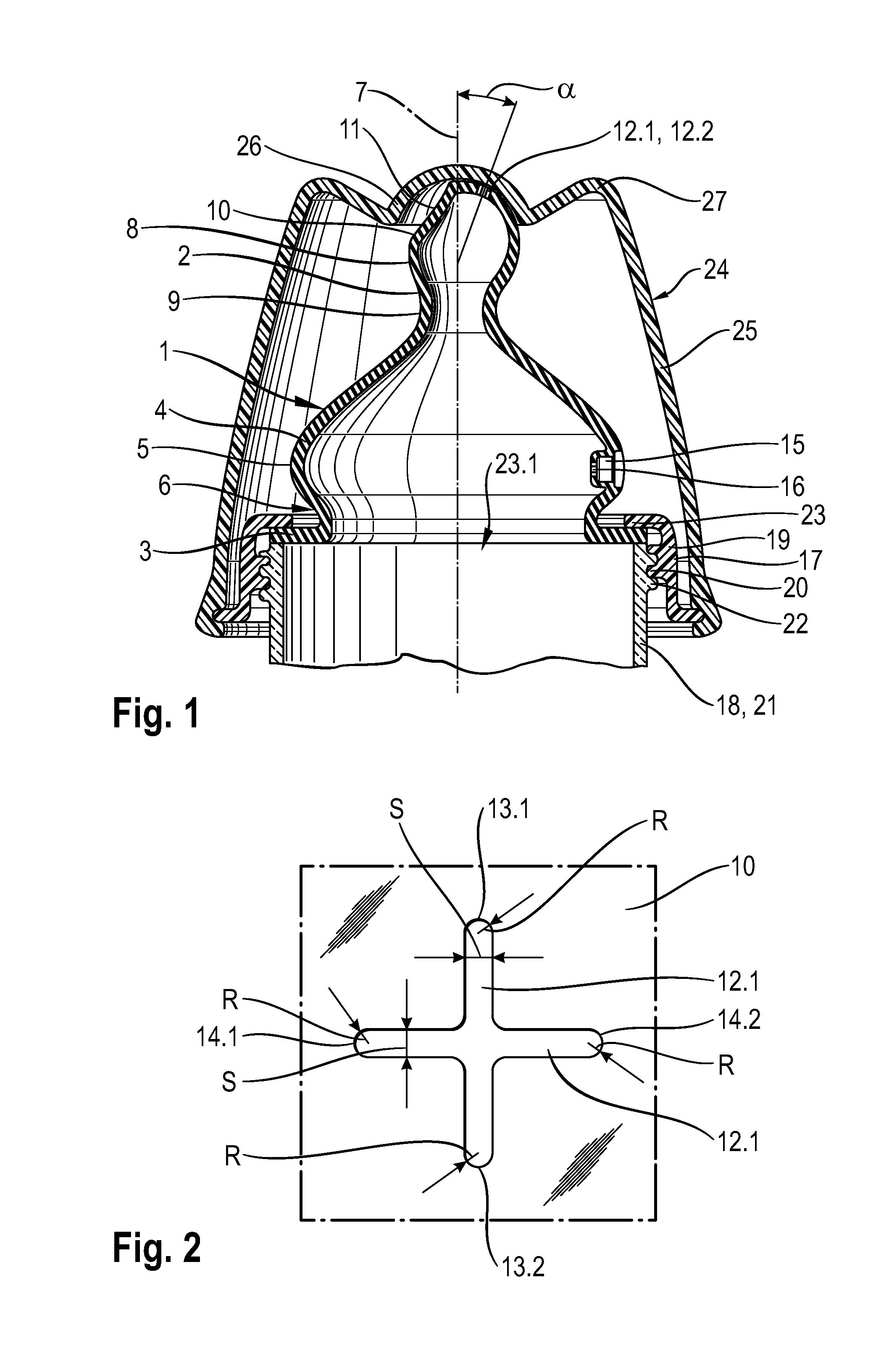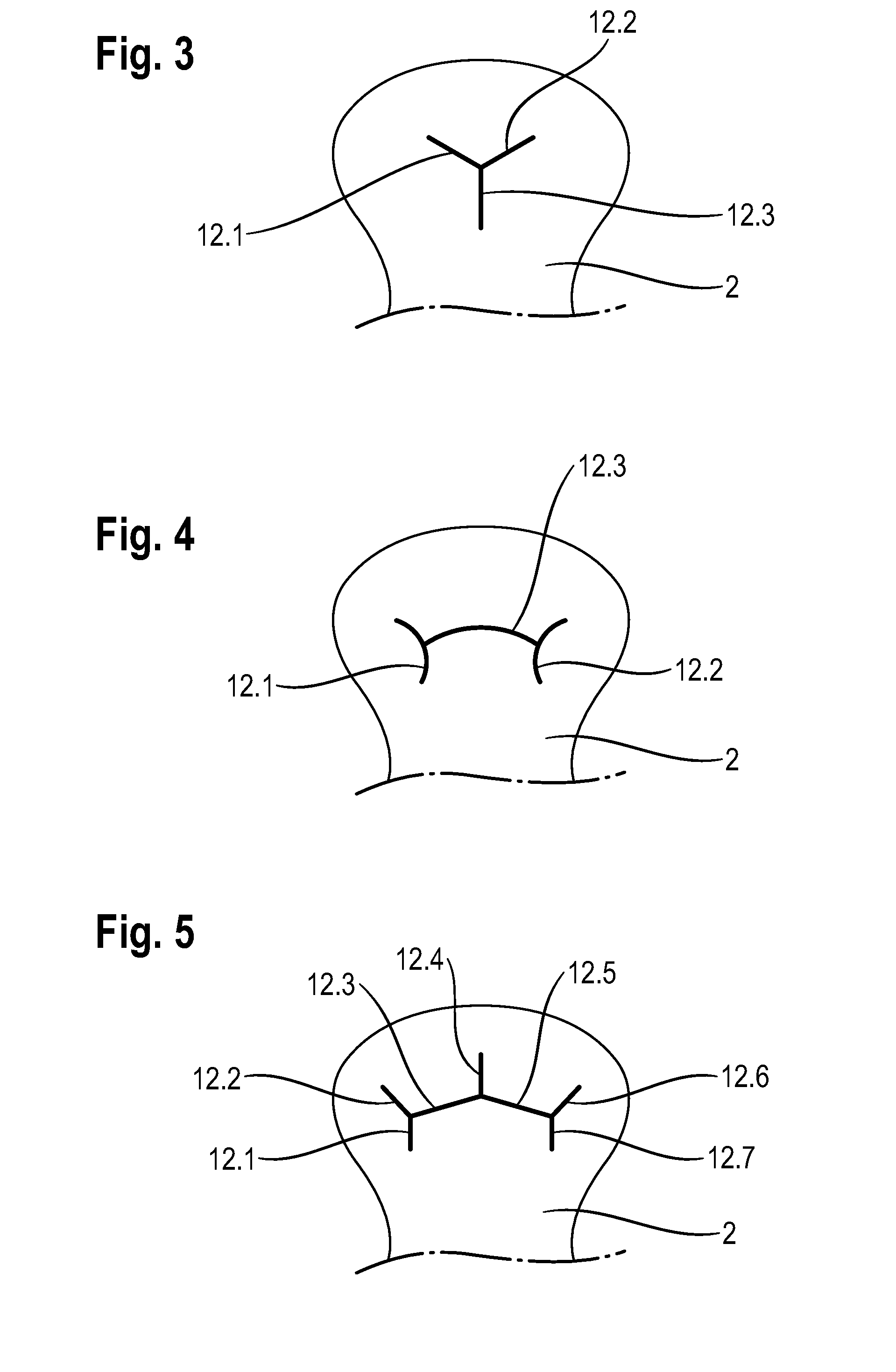Bottle Teat
a technology of teats and teats, applied in the field of teats, can solve the problems of soft elastic teats falling off, child not becoming familiar with feeding, and difficult to withdraw liquid, and achieve the effects of facilitating feeding, facilitating feeding, and facilitating feeding
- Summary
- Abstract
- Description
- Claims
- Application Information
AI Technical Summary
Benefits of technology
Problems solved by technology
Method used
Image
Examples
Embodiment Construction
[0055]While this invention may be embodied in many different forms, there are described in detail herein a specific preferred embodiment of the invention. This description is an exemplification of the principles of the invention and is not intended to limit the invention to the particular embodiment illustrated.
[0056]In the present application, the terms “top” and “bottom” refer to an arrangement of the bottle teat in which the suction part is above the teat flange when the teat flange is horizontally aligned.
[0057]The bottle teat 1 has a suction part 2 which is connected at the bottom to an annular-shaped teat flange 3. The bottle teat 2 has a bellows-like nipple sleeve 4 that narrows upward from a large diameter 5. At the bottom, the nipple sleeve 4 has a constriction 6. At the bottom end of the constriction 6, the nipple sleeve 4 is connected to an annular-shaped nipple flange 3 projecting radially outward that surrounds a mid-axis 7.
[0058]At the top, the nipple sleeve 4 bears a ...
PUM
 Login to View More
Login to View More Abstract
Description
Claims
Application Information
 Login to View More
Login to View More - R&D
- Intellectual Property
- Life Sciences
- Materials
- Tech Scout
- Unparalleled Data Quality
- Higher Quality Content
- 60% Fewer Hallucinations
Browse by: Latest US Patents, China's latest patents, Technical Efficacy Thesaurus, Application Domain, Technology Topic, Popular Technical Reports.
© 2025 PatSnap. All rights reserved.Legal|Privacy policy|Modern Slavery Act Transparency Statement|Sitemap|About US| Contact US: help@patsnap.com



